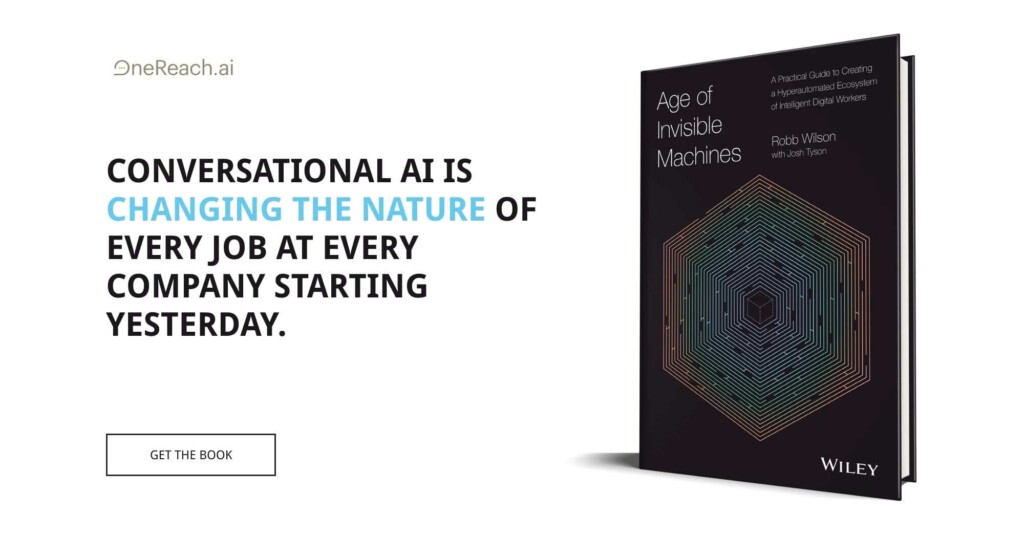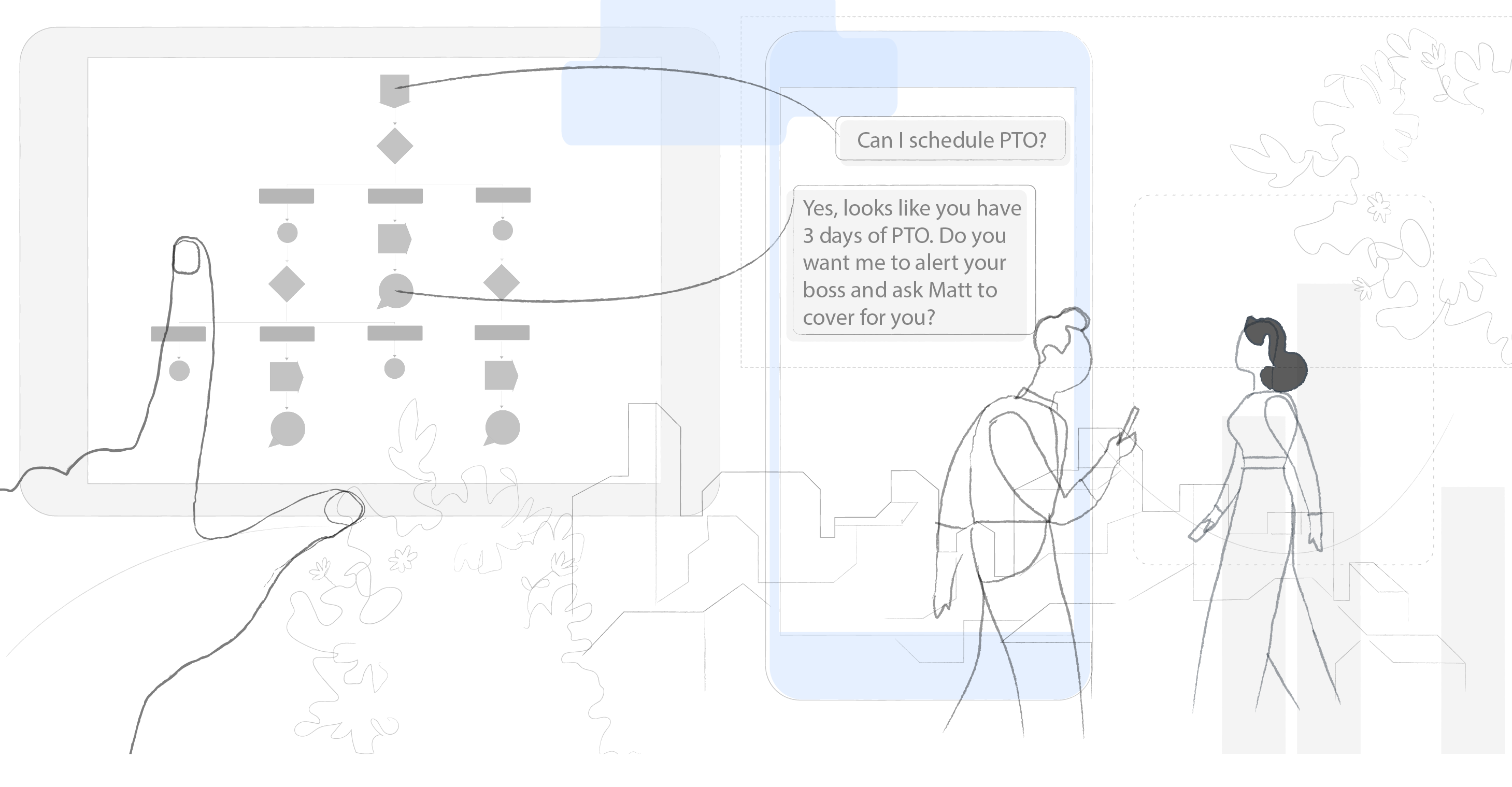If there’s a silver lining to be found amid the devastation of the global pandemic it might be the way it’s snapped everyone’s priorities into sharp focus. From a business perspective, the boundaries between work and life have disintegrated for virtual workers, and frontline workers are busier than ever. Organizations need to respond by reimagining the way they support and empower their workforces using technology.
Thankfully, this urgent need to evolve workforce experiences coincides with the continued evolution and availability of AI solutions, presenting opportunities to make renewed investments in well-being. This pandemic-fueled push will lead us toward the Future of Work.
As headlined in the third edition of Deloitte’s State of AI annual report, “we are entering a new chapter in the adoption of the current generation of AI technologies: Capabilities are advancing, it is becoming easier to develop and implement AI, and companies are seeing tangible benefits from adoption.”
Technology has matured to allow organizations to deploy sophisticated chatbots and digital assistants. These solutions use Conversational AI capabilities to create experiences for the workforce that go beyond what humans alone can deliver. These bots can fundamentally transform the way workplace interactions are enabled, with the ability to resolve inquiries, automate administrative tasks, prompt the right behaviors, and deliver data and insights to improve “in the moment” decision-making.
Many organizations have struggled to harness the full power of Conversational AI, but now is the time to figure it out, because the need for organizations to provide this type of “always on” and personalized support has never been more important.
The Storm has Been Brewing
Prior to the pandemic, workforce well-being was already at the top of the agenda. It was the highest ranked trend for importance in Deloitte’s 2020 Global Human Capital Trends study, with 80% of the nearly 9000 survey respondents identifying it as important or very important to their organization’s success. Still, only 12% said they were fully ready to address this trend. Heading into 2021, organizations need to focus on designing work for well-being—with an emphasis on the factors that make both remote and in-person work more sustainable. Conversational AI offers unique capabilities to support in this endeavor.
As might be expected where bold technology is concerned, we’ve found many organizations lack a strategy and roadmap to address this pressing need, despite recognizing the potential for AI to play a significant role. At Deloitte, our mantra for any AI journey is to think big, start small, and scale quickly—and it starts by understanding what is possible with today’s technology.
The Art of the Possible
Creating a strategy and roadmap for success with AI requires the application of design thinking principles. The goal is to deliver exceptional experiences for workers during “moments that matter”—or moments when a worker’s perception of their company is at a heightened susceptibility to influence, positively or negatively. These moments are opportunities to create strong connections with workers by making them feel valued and supported.
There are many “moments that matter” throughout the talent lifecycle: returning from maternity or paternity leave, being promoted to a people manager role for the first time, or being displaced due to restructuring or M&A activity. These moments create opportunities to capitalize on the art of the possible.
At Deloitte, we’ve partnered with OneReach.ai, a leader in the Conversational AI market, to explore new ways to deliver reimagined experiences during these “moments that matter.” In the below example, Luke is a new hire and has several onboarding activities to complete:
Conversational HR use case built on OneReach.ai’s no-code/low-code platform.
In this scenario, conversational AI isn’t just about the automation of Luke’s onboarding tasks. Rather, it is used to design and deliver next-generation experiences that would not be practical or possible without this technology:
- Onboarding Deadline Detection: the ability to monitor events and worker data to “nudge” people to take actions when they are needed. This type of monitoring and auditing is not efficient or practical to support manually and can be difficult to achieve with “out-of-the-box” technology
- Trigger Text Flow: the ability to recognize preferences of workers and interact via a wide range of channels, SMS text in this example. The manual alternatives typically rely on email, phone calls, or cases to manage interactions, which don’t always “meet workers where they are” or consider worker preferences. Many times, communications fall through the cracks and workers are stuck chasing people to get the support they need, all of which can contribute to a negative experience
- Populate Buttons: the ability to present the options that are relevant and tailored for the worker based on specific circumstances and data. This allows for a new level of personalization not easily created with more static technologies and would require significant administrative overhead to deliver manually
- Scheduling Information: the ability to pull back-end calendar data to alleviate the burden of scheduling via a digital assistant or concierge experience. Scheduling often requires significant administrative effort to coordinate availability and manage changes. The bot-enabled approach offers a more seamless and less frustrating experience for the new hire
- Human in the Loop: the ability to involve humans to provide support when needed can also democratize the ability to continue training the bot over time. This is high-level functionality, but as the bot queries humans for solutions, it can learn from their responses and provide expanded support without the need to involve technical developers. The concept of democratization gives business owners the opportunity to grow technology capabilities directly, which speeds up continuous improvement and real-time updates to deliver a better experience for workers
Using the capabilities listed above, we can make Luke’s onboarding experience easier and more rewarding. Driven by his preferences and with reduced manual effort, it becomes frictionless. By eliminating common pain points, this type of experience allows new hires to focus on the human elements of onboarding that are more important: learning how to navigate a new organization, building a network, and quickly becoming productive in a new role.
Easier Said than Done
At Deloitte, we’ve worked with a variety of clients across industries, and there are only a handful of “success stories” where organizations have deployed Conversational AI in a transformational way. We’ve seen chatbots reduce call volume for service centers by helping workers find answers to routine questions, but few examples of architected, digital assistants guiding workers through complex, end-to-end “moments that matter” like the new hire onboarding example above.
The technology is available, so why are organizations struggling to implement it? Why aren’t we making workplace interactions easier for workers? We’ve uncovered common barriers impacting various stages of the journey, and proposed ideas below on how to overcome them.
Challenge #1: Establishing a business case. The early days of automation and AI were focused on efficiency and capacity creation. How many FTEs (full-time equivalents; the hours worked by one worker on a full-time basis) of work can be freed up by investing in a bot? This type of business case is relatively straightforward, but the supporting task-level automations tend to generate incremental value. We’ve also found that only 12% of respondents to our 2020 Human Capital Trends study are looking at AI as a solution to replace workers. This suggests that AI isn’t all about cost-cutting, but you still need justification and funding to invest in new technology capabilities and it is difficult to build a business case around something transformational and conceptual.
We suggest shifting focus to build a “value case” by linking the investment in technology to business outcomes, such as improved retention and productivity. It’s challenging to quantify but can create a more compelling impetus for change if positioned the right way. For example, one study indicated workers spend 25% of their time looking for information that they need to do their job. Imagine being able to recover a fraction of that time to focus on more important activities and the value it could create for the organization.
It also helps to build a coalition with multiple functions. HR, IT, Facilities, and other departments could combine forces and budgets to transform the workforce experience in a more holistic way and eliminate the burden on workers to navigate complex organizational structures. New hire onboarding is traditionally owned by HR, but in the above example, we incorporated the ability to request assets typically managed and provisioned by IT or Facilities. The coalition approach is required to design cross-functional solutions that make sense from the worker’s perspective.
Challenge #2: Creating the foundation for AI. AI solutions rely heavily on data and insights to function, which has created a misconception that organizations need to establish a “foundation” before considering more advanced technology. The reality is that Conversational AI and other solutions can improve the workforce experience without the need for a mature infrastructure. In the new hire onboarding example above, the AI platform we used served as a front-end “orchestrator” capable of referencing multiple applications and data sources behind-the-scenes. This open platform approach enables organizations to build the integrations and workflows needed to deliver a simple and productive experience to make it easier for workers to navigate a fragmented system landscape. With this approach, you can start small and scale quickly.
Challenge #3: Finding the right tool for the job. The Conversational AI vendor marketplace is fragmented and confusing. Many large organizations will—and maybe should—end up with multiple solutions. Enterprise technology providers have invested in native Conversational AI solutions, which offer a path to easily experiment without having to add new vendors to the mix, but the capabilities are still maturing. Many IT functions have established enterprise-standard platforms that allow for “build your own bot” flexibility, but that doesn’t work for all use cases and can be cumbersome to deploy and maintain.
There are also many point-solutions and function-specific vendors to consider in the marketplace, but they often carry a high technology cost to procure. The likely outcome for many organizations is the implementation of multiple tools capable of doing similar things and a gap in delivering solutions for the complex and end-to-end “moments that matter,” such as new hire onboarding. Underestimating this inevitability can quickly backfire and create a negative, or more confusing, experience for workers. We recommend establishing a clear strategy and governance model for when and how to use different Conversational AI tools with a priority focus on the workforce experience.
Challenge #4: Focusing on conversational design. Conversational AI is like water. When it’s applied the right way it can flow and fill the gaps between applications, delivering a truly seamless user experience. But the value and success of a Conversational AI initiative is dependent on the quality of the experience-driven design. Deloitte recently worked with a client to deploy a relatively straightforward virtual agent capable of answering questions and searching a knowledge base through a chat interface. Following the initial launch, the client was able to automate nearly 60% of the chat interactions by providing a satisfactory and helpful response via the virtual agent.
A different organization deployed the same vendor solution and use case but achieved a meager 5% success rate for automation. The more effective example centered the design on making it easy to locate the bot and architected the underlying knowledge base specifically to support chats, providing small snippets of targeted information at a time. In the other example, it was more challenging to find and initiate a chat with the bot, and the knowledge base was structured for self-service online reading, which inadvertently generated long, and often unhelpful, responses in the chat. As a result, workers were quick to opt for human support instead of reading dense passages provided by the virtual agent.
To overcome these challenges, we suggest taking a broad view of the experience design that addresses the following illustrative questions:
- How will workers access the bot?
- How will they know to access the bot?
- What other applications or bots do they need to interact with and how do we direct traffic to the right place?
- What information and data does the bot need to reference to support the use case?
- How is the requisite information structured?
- How will the bot greet the worker and how are conversations structured once initiated?
- How do we involve humans if the bot is unable to provide support?
- What are the desired outcomes?
- How will we measure performance to ensure outcomes are created?
Challenge #5: Building the required human capabilities. There is a talent challenge ahead for most organizations. Not only is there a gap in the understanding of “the art of the possible” but the capabilities required to capitalize on technology advancements are in short supply. Cutting-edge jobs like Solution Architect and Augmentation Specialist are in high demand and will require UX skills not traditionally associated with the AI field.
Broad and multi-faceted as it may be, the realm of UX has also failed to keep pace with the needs that coincide with advances in AI, which creates a challenge for organizations to find the right talent. The way to bridge the gap is by intentionally creating strategies to hire and develop talent to operate at the intersection of UX and AI. Organizations that figure this out will gain the ability to deliver solutions capable of creating a more productive, engaged, and high-performing workforce enabled by more effective talent attraction, development, and retention practices. This is a massive win.
Think Big, Start Small, Scale Quickly
The best way to get started is by establishing the digital strategy and roadmap for workforce experiences, anchored by the technologies and solutions your organization will need to make the vision a reality. Use real-life examples and stories to validate your thinking. For most organizations, that means aligning on the digital experiences that are critical for your workforce and selecting the right tools to deliver them. Once you have the right tools, prioritize the one or two highest-value use cases to start working on. Look for “moments that matter” by listening to workers. The good news is that they are usually vocal about their frustrations, which can help you to identify the highest-value opportunities to positively influence their experiences.
As organizations race to adopt this new wave of intelligent technology and bring rewarding, high-value experience to their workforce, it’s crucial to focus on a strategy and roadmap that will let you achieve small victories and create momentum early. Harnessing the power of Conversational AI is a new discipline and you shouldn’t expect to get it right the first time, but you will need to demonstrate outcomes to sustain funding and leadership support.
Building upon your successes as they come can accelerate the process. Scan the organization to find pockets of experimentation with AI and start to build a coalition to share information. Reach out externally to your ecosystem network to get a broad perspective and solicit ideas. So go ahead and think big. Start small by finding moments that matter to your workforce and iterate on ways to automate and enhance them. Once you begin unlocking the art of the possible in this way, you’ll be able to scale quickly and take your organization forward in leaps and bounds.






